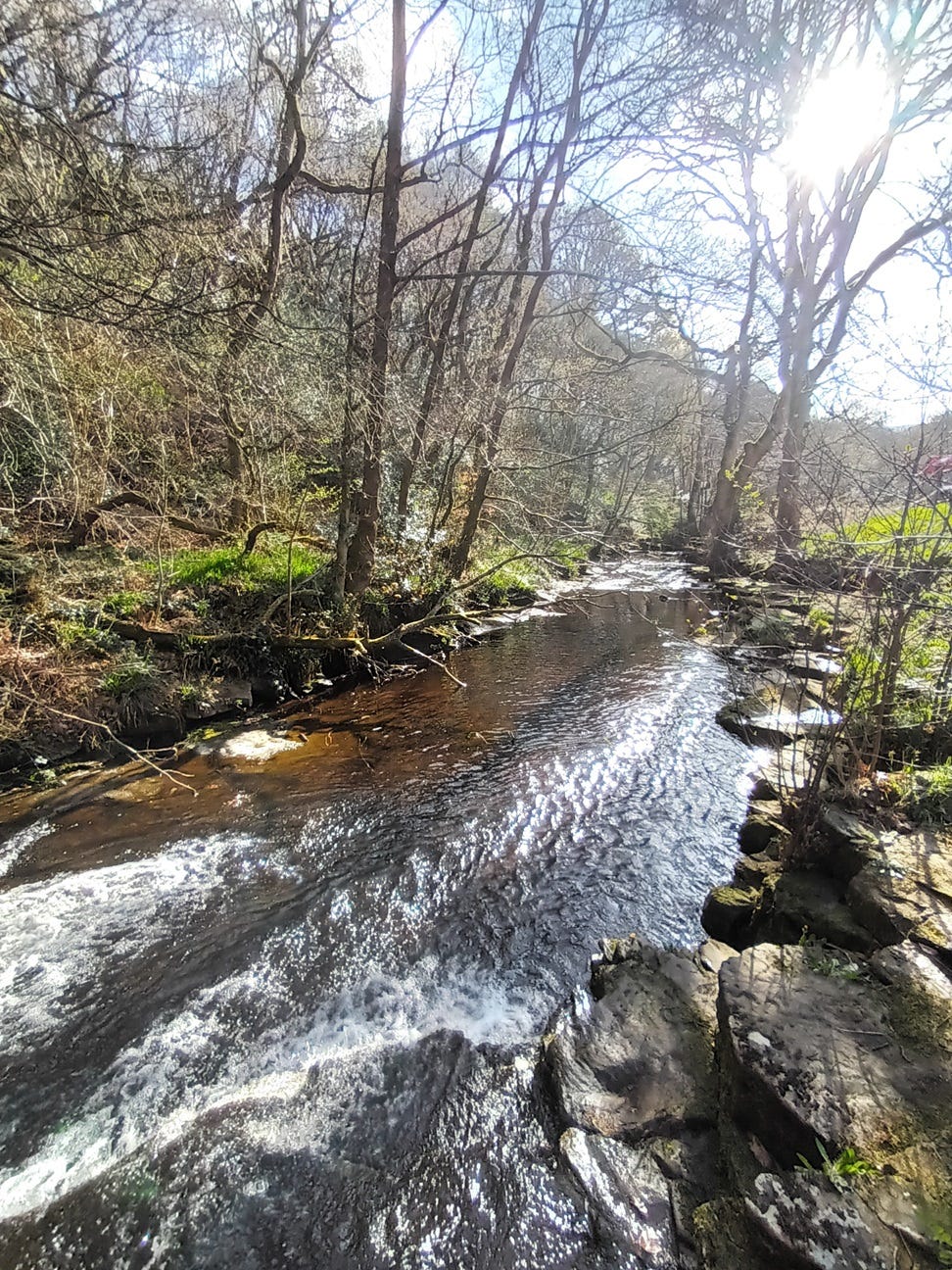Calderdale brook given protected status to help save native crayfish
Plus, residents get their say on polling station locations
Hello and welcome to The Calderdale Lead.
I hope you’re having a good week so far and are looking forward - hopefully - to a long Easter weekend.
Now Calderdale might not seem like the natural dwelling place for crayfish but apparently it is!
We’ve got details of a local brook which has been awarded protected status because it’s is home to one of West Yorkshire's last remaining populations of white-clawed crayfish.
Apparently they’re under threat from some invasive north American specie. Sound familiar?
Plus, details of how residents can help shape the future of voting in the borough, ahead of the all-out elections next year which will see a new ‘ward’ created.
So, on with the news…
Crayfish site gets protected status as rare species fights against American rival
Calderdale might not be the first place that springs to mind when you think about crayfish.
But there’s a brook in the borough which is to one of West Yorkshire's last remaining populations of white-clawed crayfish.
Now, the Luddenden Brook, located between Halifax and Hebden Bridge, has now been awarded Local Wildlife Site status, meaning it’s an area which is especially important for wildlife, supporting rare or threatened species and habitats.
The brook sits within Jerusalem Farm which is owned and managed by Calderdale Council.
The threatened white-clawed crayfish species is on the conservation red list, with numbers declining due to the introduction of the non-native North American signal crayfish.
That species is prevalent in many waterways in Calderdale, spreading crayfish plague, a disease which kills the native white-clawed crayfish.
The new Local Wildlife Site status provides official protection to the crayfish species and the brook in which they live.
As part of special efforts to protect them, biosecurity measures at the site are being increased, this includes putting up educational boards and providing special boot cleaning stations.
This is being done with funding from Natural England and with support from the Environment Agency and Yorkshire Wildlife Trust.
The measures aim to stop the spread of crayfish plague, which can also be transferred on people's clothing and boots. Visitors will be encouraged to 'check, clean and dry' their footwear and not to enter the brook at Jerusalem Farm.
The actions form part of the Calderdale Ecological Action Plan, which sets out the comprehensive and long-term approach to protecting and enhancing the borough’s natural environment for the benefit of present and future generations.
One of the key priorities in the plan is the protection of Calderdale’s wildlife, with the white- clawed crayfish identified as a particularly vulnerable species which requires specific conservation action.
Calderdale Council’s Cabinet Member for Climate Action and Housing, Cllr Scott Patient, said: “As part of our Ecological Emergency Action Plan, we’re committed to doing all we can to protect the borough’s wildlife, with a particular focus on the most-threatened species.
“The white-clawed crayfish is sadly fast disappearing from the UK’s waterways, due to the threat of disease from non-native species. It’s vital that we protect the numbers that do remain, preventing them from further harm.
“Jerusalem Farm is one of the few places in West Yorkshire where the white-clawed crayfish can currently be found and I’m delighted that the Luddenden Brook, which runs through the site, has been granted Local Wildlife Status.”
To find out more about how to help with conservation click here.
Residents urged to have say on future of voting in borough
Residents across Calderdale are being urged to have their say on on the location and suitability of local polling stations, to help inform voting arrangements for future elections.
The Local Government Boundary Commission for England conducted an Electoral Review of Calderdale.
In 2024, they concluded that Calderdale should be split into 18 wards - one more than the current arrangements - with three councillors elected to each ward.
The changes include the creation of a new ward of Wainhouse, taking in parts of the current Skircoat and Sowerby Bridge wards. The names and boundaries of a number of other wards will also change.
Parliament has approved these changes, which means that the council must hold a Polling District, Polling Places and Polling Stations Review.
For this, each new ward will be split into polling districts and polling stations chosen to serve them.
People are being asked to share feedback on where they think their local polling place/station should be. This will help the Council decide how to split the new wards into polling districts.
As part of the review, the Council will look at:
Where a polling station is in each polling district.
How accessible each polling station is.
What buildings could be used.
The polling district boundaries within each ward of each constituency.
Calderdale Council’s Head of Legal and Democratic Services, Ian Hughes, said: “This important review gives people the opportunity to have their say on their voting arrangements.
“Many of our polling stations have been used for a number of years and people will be familiar with their local polling station. We want to hear if anyone has concerns or issues with the current venues, or if there are any suggestions for new locations to look into, so we can ensure that all electors have reasonable facilities for voting and that venues are accessible.”
The next full local election in Calderdale is scheduled for the 7 May 2026.
For more information and to give feedback on the review, click here.





